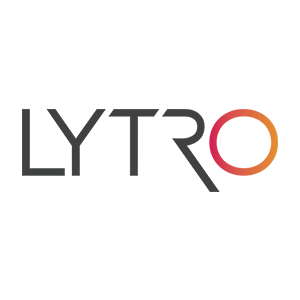Website lytro.com Founded 2006 Type of business Private | Products Light-field camera CEO Jason Rosenthal Chief product officer Ariel Braunstein COO Omer Cohen | |
 | ||
Profiles | ||
Lytro camera review camera that never gets out of focus first generation
Lytro, Inc. is an American company founded in 2006 by Ren Ng which develops light-field cameras. Lytro began shipping its first generation pocket-sized camera, capable of refocusing images after being taken, in 8 GB and 16 GB versions on February 29, 2012. In April 2014, the company announced Lytro ILLUM, its second generation camera for commercial and experimental photographers. The Lytro ILLUM was released at $1,600. The ILLUM has a permanently attached 30–250mm (35mm equivalent) f/2.0 lens and an articulated rear screen. In the fall of 2015, Lytro changed direction, announcing Immerge, a very-high-end VR video capture camera with companion custom compute server. Immerge is expected to ship in 2016, and be useful to studios trying to combine CGI-based VR with video VR.
Contents
- Lytro camera review camera that never gets out of focus first generation
- Lytro camera tutorial creative mode
- History
- Original Lytro Light Field Camera
- Lytro ILLUM
- Lytro Immerge
- Investment
- Technology
- References
Lytro camera tutorial creative mode
History
While he was a researcher at Stanford, Ren Ng was photographing a friend's daughter and noticed, "it was incredibly difficult to focus the image properly and capture her fleeting smile in just the right way". After completing his Ph.D, Ng decided to use his experience in light field research to "start a company that would produce light-field cameras that everyone could enjoy." The company was originally named Refocus Imaging, before launching as Lytro.
Lytro board members include Ben Horowitz, general partner at Andreessen Horowitz; Patrick Chung, partner at NEA; and TiVo cofounder Mike Ramsay, with Charles Chi of Greylock Partners serving as Executive Chairman. Advisors include Intuit cofounder Scott Cook, VMware cofounder Diane Greene, Dolby Labs chairman Peter Gotcher and Sling Media cofounder Blake Krikorian.
Lytro founder Ng was Lytro's first CEO. Lytro’s Chief Technology Officer Kurt Akeley was a founding member of Silicon Graphics. In June 2012 Ng announced that he would be changing roles and be Lytro's Executive Chairman focused on innovation. Charles Chi would change from Executive Chairman to interim CEO while Lytro's board begins looking for a new CEO.
In June 2011, Apple Inc CEO Steve Jobs purportedly met with Ng to discuss improvements for the iPhone camera.
Although not a true light field camera, the HTC One (M8) mobile phone released in April 2014 mimics Lytro's depth-sensing functionality through the use of a second camera and stereoscopic post processing.
Original Lytro Light Field Camera
The original camera is a square tube less than five inches long with a lens opening at one end and a 1.52" LCD touch screen at the other. The first generation of the camera comes in two options: one with 8GB of memory (which can hold 350 pictures) and one with 16GB (which can hold 750 pictures).
Lytro ILLUM
The Lytro ILLUM features a 40 megaray sensor (in comparison to the original Lytro Camera's 11 megaray sensor), and a more powerful processor. The 30-250mm lens has 8.3x optical zoom, an f/2.0 aperture, and 1:3 macro focus capability. The lens was designed to weigh half a pound to make the camera lighter and more agile. The ILLUM features a 1,152,000 pixel articulated 4" LCD touchscreen with a wide aspect ratio. A display overlay shows the photographer the relative focus of all objects in the frame, and which elements are re-focusable. The camera has an SD/SDHC/SDXC card slot and no internal storage. It also features a USB 3.0 port, external shutter release port, hot shoe, tripod mount, and removable battery. The CMOS image sensor measures 1/2" (6.4 x 4.8 mm) and the sensitvity can be varied from ISO 80 to 3200.
Lytro Immerge
On November 5, 2015, Lytro announced Immerge, an end-to-end system for capturing light fields for use in creating Virtual reality(VR) content.
Investment
Funding Received: $140 Million in 4 Rounds from 8 Investors
Most Recent Funding: $50 Million Venture on February 25, 2015
Technology
Light-field photography (also known as plenoptic photography) captures information about the intensity of light in a scene, and also captures information about the direction that the light rays are traveling in space. Lytro's light field sensor uses an array of micro-lenses placed in front of an otherwise conventional image sensor; to sense intensity, color, and directional information. Software then uses this data to create displayable 2D or 3D images. Lytro trades maximum 2D resolution, at a given distance, for enhanced resolution at other distances. Users are able to convert the Lytro camera's proprietary image into a regular 2D image file, at any desired focal distance. The maximum ILLUM 2D resolution is 2450 × 1634 (4.0 megapixels), The 3D light-field resolution is 40 "megarays". The first generation camera has a maximum 2D resolution of 1080 × 1080 pixels (roughly 1.2 megapixels),
Features of a light-field camera include:
